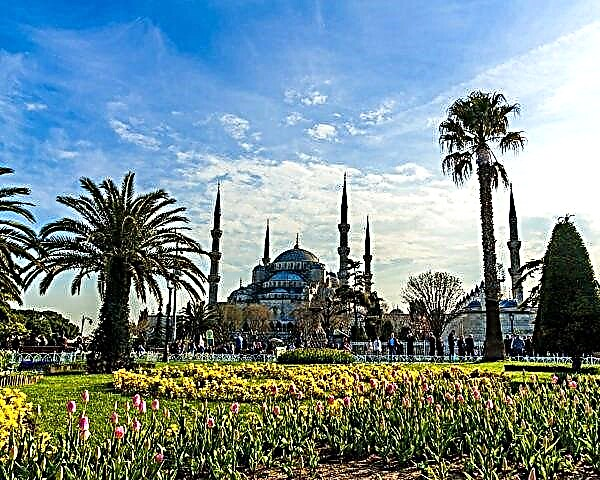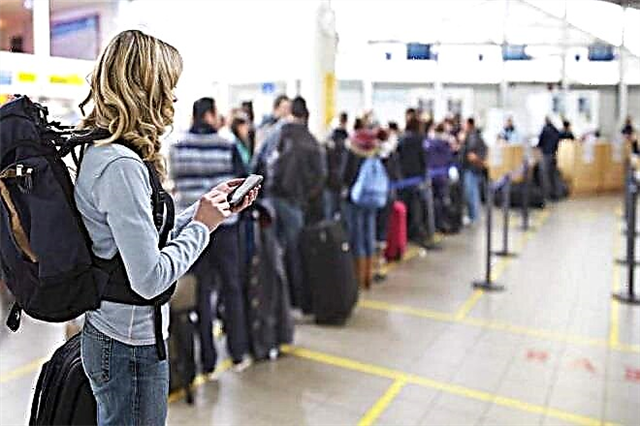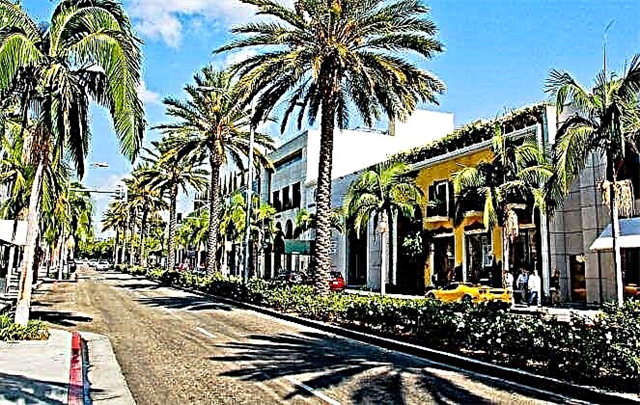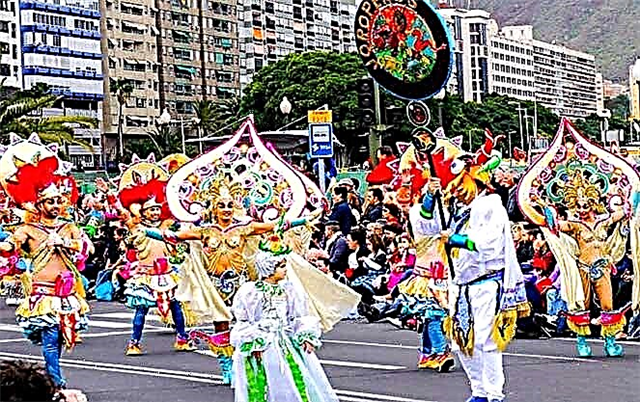The Spaniards carefully cherish their centuries-old cultural traditions. The old folk holidays include, first of all, carnivals in Spain, which take place on the eve of Lent, and have their own characteristics and costumes. And although the Spanish carnival processions are not as famous as the Venetian performances, they are in no way inferior to them, attracting millions of tourists from all over the world.

The emergence and significance of carnivals
With the advent of Christianity, many merry pagan holidays in Europe were banned, and then people began to hold carnivals before Lent, taking advantage of the last opportunity to eat and have fun on the eve of spring. The very word "carnival", according to scientists, comes from the Latin expression: "Meat, goodbye!" (carne vale). And since the church did not approve of such feasts, residents of cities and villages began to hide their faces under masks.
Carnivals in February and early March are accompanied by costumes, masks, processions, songs, dances, and the election of the queen of the carnival.
The symbol of the Spanish carnival is the burial of the sardine.
On the last day of the holiday, residents carry a coffin with a stuffed fish through the streets, which is then burned, making room for something new and good. Ash Wednesday at Shrove Tuesday marks the beginning of Lent. On this day, believers sprinkled ashes on their heads as a sign of humility.

Today the celebrations have lost their religious motives and turned into holidays of good mood, contributing to the development of tourism. These days everyone is equal and free from worries.
Carnival traditions "chirigotas", "komparsas", "murgas"
Carnivals are held throughout Spain - in Torrevieja, Barcelona, Malaga, Alicante, Costa Brava, but a special scale is characteristic of the southern regions - Cadiz and the Canary Islands. It was here that such elements of the holiday became popular as chirigotas - groups of street singers in funny costumes performing humorous songs and comparsas - groups of dancers who arrange magnificent processions through the streets and dance extravaganzas.
"Murgas" - funny theatrical performances with songs and dances, in which human vices are ridiculed.
Often these are satirical sketches on the topic of the day about the problems of concern to the Spaniards, where criticism of the government's actions can be heard. It was these sharp jokes that caused the persecution of artists during the reign of Franco, bringing "Murgas" universal popularity.
Where and when are carnivals in Spain
Traditionally, in most cities and villages in Spain, carnivals are held in the week before the beginning of Lent. Since Catholic Easter in 2021 falls on April 21, and fasting begins 45 days before Easter, the main celebrations will take place from February 28 to March 5. At the same time, many famous festivals that attract the attention of tourists do not always fit into these strict frameworks.
| Title, dates | Peculiarities |
|---|---|
| Carnival of Santa Cruz in Tenerife 27.02-6.03.2019 | Carnival in Santa Cruz de Tenerife is considered the second largest carnival after the Brazilian one. It takes place with festive processions, queen elections among children and adults. Caribbean fiery music sounds, drums are thundering, the audience is amused by "chirigotas", "komparsas", "murgas". The processions are free for everyone; a ticket for the election of the queen costs 10-15 euros. |
| Las Fallas Fire Festival in Valencia 15-19.03.2018 | Carnival action brings together a fair, performances of street mimes, artists, huge dolls "ninots" up to 20 m high, which are placed around the city. The figures represent politicians, famous artists, singers, and fairy-tale characters. In the evening, performances of the "fire masters" begin - a fire show. The entrance is free. |
| Carnival in Madrid 1-6.03.2019 | Costume processions, a masquerade ball, performances by street singers and artists, fire shows - tourists have something to see in the capital. The holiday ends with the "funeral of the sardine", with which the cheerful Spaniards get rid of their bad mood and everyday troubles. |
Carnivals in other Spanish regions
| Carnivals in Tenerife | Carnivals in the Canary Islands also take place in Las Palmas de Gran Canaria. This is the largest festival in Europe, based on a long tradition: the main procession, the election of the queen, the funeral of the sardine. Spectators appreciate the festival for its Caribbean motives, Latin American scope, and the spectacularity of the event. |
|---|---|
| Carnivals in Galicia | In Galicia, ancient Celtic rites have been preserved, because festivities were held here even during the Franco dictatorship. Eight carnivals are considered a must-see for tourists. On holidays they eat a lot, drink, dance, sing, have fun. |
| Carnival in Ourense | In the province of Ourense, there are six compulsory carnivals out of eight in Galician. In Lasa, the main participants of the holiday - pelikeyros - go with whips, expelling evil spirits from their fellow citizens. Tall hats are sewn in Corbes, decorating them with beads and mirrors, and in Verin they make wooden masks for the participants. The main thing here is not a parade of costumes, but sprinkling with flour, pouring vinegar, throwing dirty rags and other interesting events. |
| Carnival in Cadiz | The festival in Cadiz is considered one of the main carnival events in Europe, along with the Tenerife carnival. But if in the Canaries the event has a more African, Caribbean atmosphere, then the festival in Cadiz has an exquisitely Venetian, Genoese soul. The program includes performances by satirical groups preparing small performances, a drawing of the Golden Half Mask prize, and the election of a goddess and her nymphs. |
| Carnival in Sitges | In Catalonia, carnivals in Sitges and Barcelona take place at the same time, but it is advisable to have time to visit both cities. Sitges is the capital of homosexuals in Europe, so the holiday here is more relaxed, insane, with the same-sex king and queen, songs by the sea, and funny jokes. The entrance to the celebration is free. |
Rental housing during carnivals
Tourists are primarily interested in where to stay during the holiday. It should be borne in mind that in the midst of carnivals, especially such famous ones as in Tenerife or in Cadiz, it is not so easy to find a place in a hotel or hostel.
Accommodation in a 3-4-star hotel in Tenerife during the carnival period costs from 300 to 500 euros per week per person.
At the same time, in Galicia, renting a one-room apartment will cost less: from 200 to 400 euros per week (about 40 euros per night). In Madrid, renting the same apartment will be 50-60 euros per night, and in the capital hostel you can find a place for 30 euros.
Conclusion
The end of February and the beginning of March is a period when everything is blooming and fragrant in Spain, so the exuberant colors of the Spanish carnival, the melodies of Cadiz, the grandiose processions in Tenerife, the Celtic motives of Galician festivals, the relaxedness of Sitges will not leave anyone indifferent. During the carnival week, it is worth visiting several places, comparing customs, traditions and rituals in various Spanish regions in order to get a complete picture of how rich in talents Spain is, which always offers tourists a lot of sun, sea, holidays and good mood.












